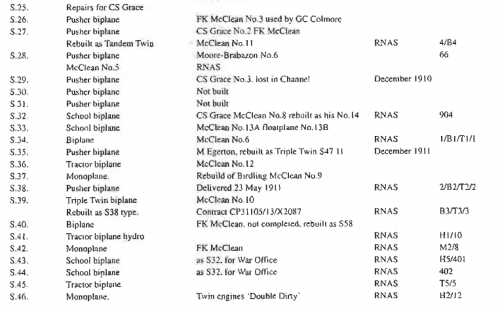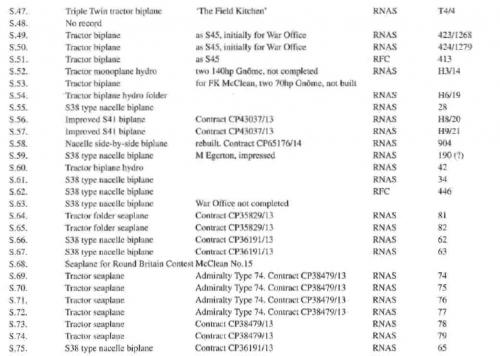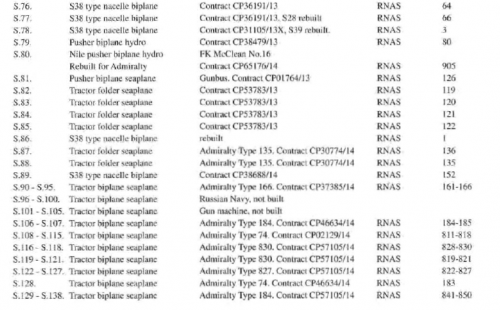- Joined
- 26 May 2006
- Messages
- 33,480
- Reaction score
- 13,527
Hi,.
The old S series are not interesting,but the second S series it is.
S.1 Cockle :single seat all metal flying boat powered by two pusher engines.
S.2 :metal-hull version of N.3 Cromarty flying boat.
S.3 Springbok :single seat all metal flying boat powered by two Bristol
engines.
S.4 Satellite :two seat mid-wing light monoplane powered by one Bristol
Cherub III engine.
S.5 Singapor I :four engined transport biplane flying boat.
S.6 Sturgeon :spotter/recce aircraft,which failed to compete the Fairey IIIF
in Spec. 19/24.
S.7 :tandem two seat low wing light monoplane powered by one ADC
Cirrus I engine.
S.8 Calcatta :three engined biplane recce flying boat powered by 540 hp Bristol
Jupiter engines.
The old S series are not interesting,but the second S series it is.
S.1 Cockle :single seat all metal flying boat powered by two pusher engines.
S.2 :metal-hull version of N.3 Cromarty flying boat.
S.3 Springbok :single seat all metal flying boat powered by two Bristol
engines.
S.4 Satellite :two seat mid-wing light monoplane powered by one Bristol
Cherub III engine.
S.5 Singapor I :four engined transport biplane flying boat.
S.6 Sturgeon :spotter/recce aircraft,which failed to compete the Fairey IIIF
in Spec. 19/24.
S.7 :tandem two seat low wing light monoplane powered by one ADC
Cirrus I engine.
S.8 Calcatta :three engined biplane recce flying boat powered by 540 hp Bristol
Jupiter engines.





